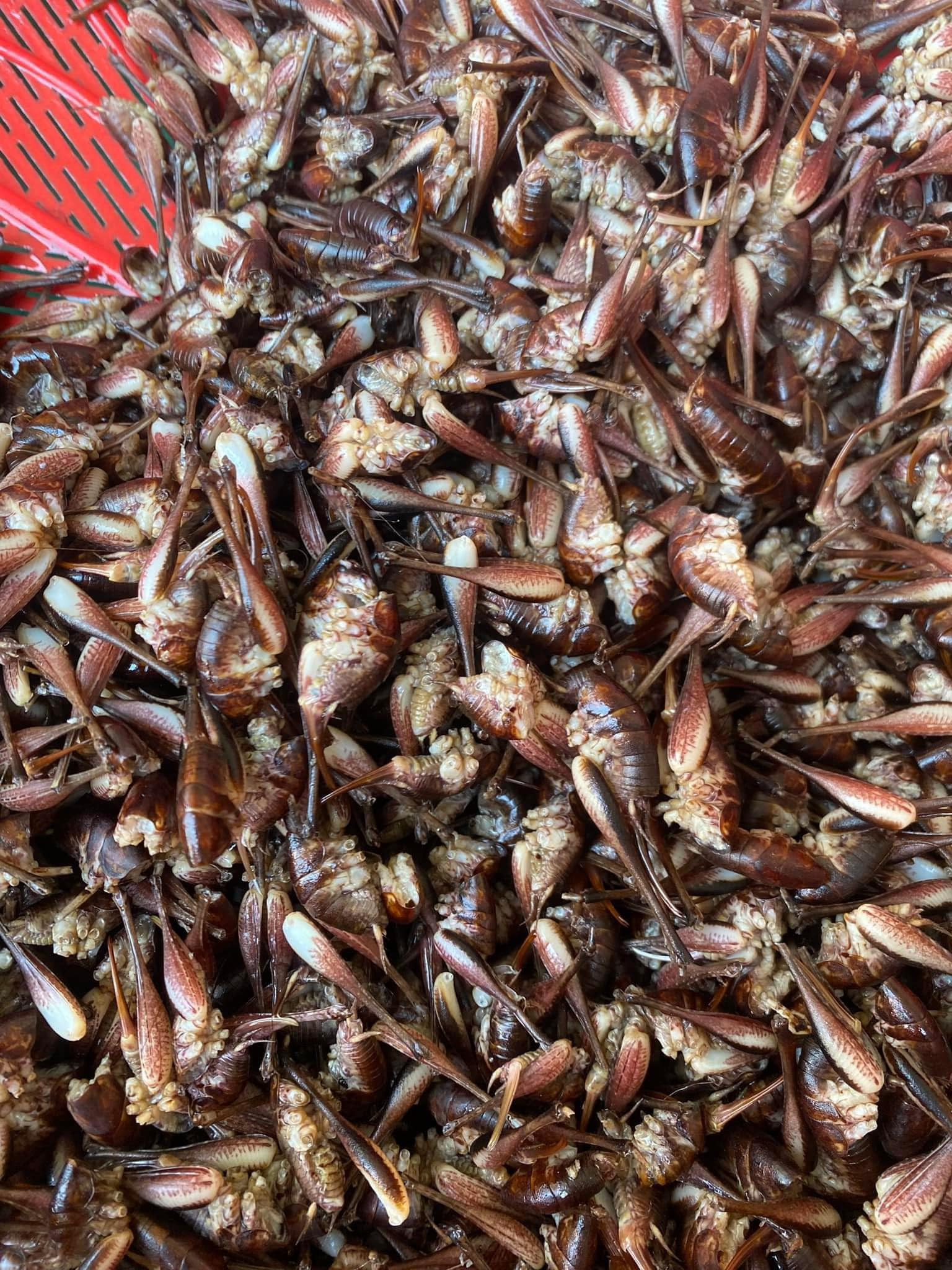
Stone worms
Sau da, or stone worms (Glomeris nipponica Kishida) resemble other worms and larvae but lack an outer fuzzy layer. They live under rocks in streams and are found in northwestern provinces like Yen Bai, Lao Cai, and Lai Chau.
From the first to the fourth lunar month, when streams dry up, especially after the first summer rains, stone worms are abundant and have highest quality. Locals go along stream banks, flipping rocks to catch them.
The Thai ethnic minority people in Muong So (Phong Tho, Lai Chau) often stuff minced goby (or leave it whole) into the belly of the worm and then fry it until crispy. In other regions, people fry it until crispy, adding a little sour bamboo shoot juice and lemon leaves.
Though stone worms are delicious when prepared, they can cause allergies or food poisoning if not handled or cooked properly.
Forest shrimp
Forest shrimp, or ‘tree climbing shrimp’, are insects that resemble small shrimp, about the size of an adult’s pinky finger. They are found in deep forests in provinces like Bac Giang and Nghe An but are most common in Lang Son.
These insects thrive in humid, densely vegetated areas, living in rock crevices or large tree hollows in deep forests, earning them playful nicknames like “flying shrimp” or “tree-climbing shrimp.”
Forest shrimp can be found year-round but are most abundant and best during the rainy season, from the sixth to seventh lunar months.
In Lang Son, forest shrimp can be prepared in various ways, but the most popular method is roasting with ginger leaves (or wild betel leaves or kaffir lime leaves).
As a sought-after delicacy and a favorite among adventurous foodies, forest shrimp aren’t for everyone, especially those prone to allergies.
Stink bugs (Pentatomidae)
Many view stink bugs as a “nightmare” insect, but for the Thai ethnic group in the Northwest, they’re a free, flavorful specialty once prepared.
From late spring to early summer, when longan and lychee trees bloom, bear fruit, and sprout tender leaves, stink bugs gather to feed on sap, build nests, and reproduce.
Locals climb trees and shake branches to collect the bugs for cooking. For the best flavor, they target young stink bugs that haven’t yet developed hard wings.
After collection, the bugs are soaked in sour bamboo shoot broth for 15-20 minutes to remove their foul odor.
After that, bugs are then cleaned by removing the head, wings, legs, and innards, rinsed again with water, drained, and fried. Locals often fry them in pork fat for a richer, more aromatic flavor than oil.
Thao Trinh